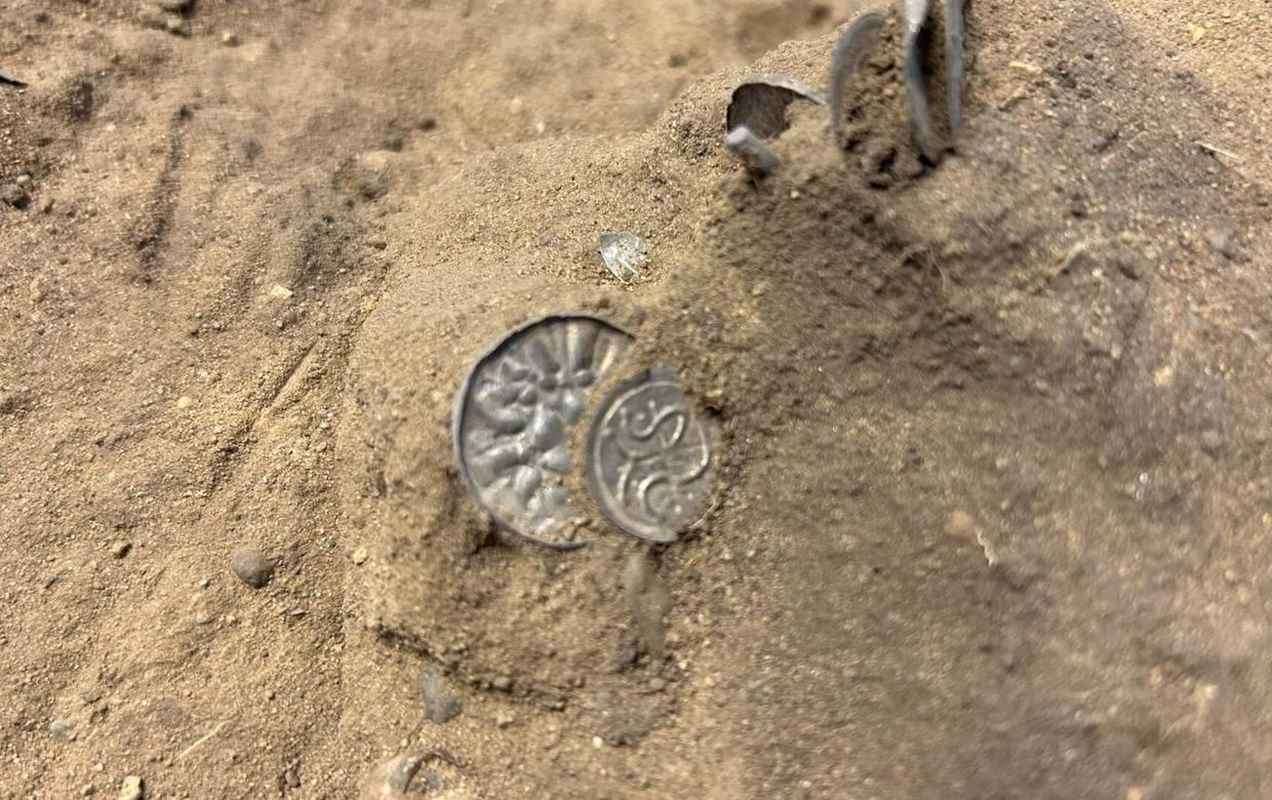Singapore Sleuth Spends 8 Months Tracking Down a Man to Return Family Heirlooms-And Finally Succeeds
The adventure ended 8 months later with a beautiful ending, that had a sort of "what goes around comes around" moral of the story.

A girl metal detecting in northwestern Denmark discovered nearly 300 silver coins dating back more than 1,000 years ago.
The hoard was discovered in a farmer's field at a place called Bramslev, near to the Medieval fort of Fyrkat built by the famous Viking warlord Harald Blåtand (Bluetooth), and was also found alongside a silver ring pin that had been cut in half.
The coins themselves are a mix of those from the Arab, Germanic, and Danish worlds. Of particular interest to the Danish archaeologists working on the site are those from Denmark, because they were struck—probably in the years 970-980—with crosses, suggesting Harald's influence in the Christianisation of Denmark which began around ths time.
Coins struck earlier in Harald's reign did not bear crosses, suggesting it was a gradual change of the man along with the people and country.
"The two silver treasures constitute a fantastic story in themselves, but to find them abandoned in a settlement only eight kilometers from Haralds Blåtand's Viking fortress Fyrkat is incredibly exciting," says archaeologist and museum inspector at North Jutland Museums, Torben Trier Christiansen.
Fyrkat is one of several "Ring Forts" built during Harald's time at the top of the Viking totem pole. Being the only country connected to central Europe by land, Denmark was at much greater threat from invasion by the Christian kingdoms to the south than the Vikings in Norway or Sweden.
The proximity to the fort raises questions about whether the burying of the hoard was done in haste—after a battle at the fort perhaps. Vikings believed they could have access in death to the treasures they hoarded and buried in life, and so hoards weren't always meant to be dug up later—the Middle Ages equivalent of stuffing a mattress with cash.
Although, that could be exactly why they were buried.
"Perhaps the castles were not given up entirely voluntarily," says Christiansen. "The Bramslev treasures were apparently buried around the same time or shortly after the castles were abandoned, and if there have been disturbances at Fyrkat, it makes good sense that the local magnate here at Bramslev has chosen to hide his valuables out of the way."
The girl who found the hoard gave it over to the North Jutland Museum, from which she received compensation for the discovery. The museum team will be returning after the summer harvest to look over the field for more clues.
There are probably no more silver treasures to be found, but during the investigations this spring, it was established that both of the two silver treasures found were originally buried inside or very close to buildings.
SHARE This Viking Age Discovery With The Viking Fans You Know…
Be the first to comment